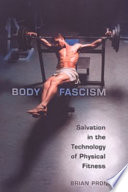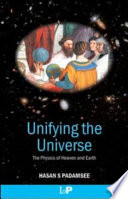 | Sharon Cameron - Language Arts & Disciplines - 1992 - 676 pages
...travel. In 1687, Sir Isaac Newton encapsulated this idea in his first law of motion: a body will continue in its state of rest or uniform motion in a straight line, unless it is acted upon by an external force. In other words, force is the agency by which a body's... | |
 | Carl T. F. Ross, The late John Case, A. Chilver - Technology & Engineering - 1999 - 721 pages
...published by Sir Isaac Newton in The Principia in 1 687, and they can be expressed as follows: (1) Every body continues in its state of rest or uniform motion in a straight line, unless it is compelled by an external force to change that state. (2) The rate of change of momentum... | |
 | N. Basu, S. Nanda, P. C. Nayak - Mathematics - 1999 - 438 pages
...required to produce such motion is said to be the kinematics. We know from the notion of inertia that every body continues in its state of rest or uniform motion in a straight line until and unless it is compelled by some external impressed force to change its state. While the body... | |
 | Jon Fripp, Michael Fripp, Deborah Fripp - Language Arts & Disciplines - 2000 - 262 pages
...Newton In Principia, 1687 This is Newton's famous expression for the universal law of gravitation. Every body continues in its state of rest or uniform motion in a straight line, except in so far as it doesn't. — Sir Arthur Stanley Eddington In The Nature of the Physical Word, 1933... | |
 | Frank Galligan - Education - 2000 - 500 pages
...when we look at force and its effects. Newton's First Law This states that an object will continue in its state of rest or uniform motion in a straight line unless a force acts upon it. This means that, for example, an athlete or the shot will remain stationary... | |
 | Brian Pronger - Health & Fitness - 2002 - 300 pages
...natures. Heidegger (1977) believes that Newton articulated this modern logos in his first law of motion: 'Every body continues in its state of rest, or uniform motion in a straight line, unless it is compelled to change that state by force impressed upon it' (256). For Heidegger, the reductionism... | |
 | Gregory E. Desilet - Philosophy - 2002 - 343 pages
...Heidegger begins by considering Newton's first law of motion, the principle of inertia, which states: "Every body continues in its state of rest, or uniform motion in a straight line, unless it is compelled to change that state by force impressed upon it" (256). Eventually Newton's... | |
 | Predrag Cicovacki - Philosophy - 2002 - 244 pages
...of the laws of nature. Newton's first law of motion thus states: "Every body which is left to itself continues in its state of rest, or uniform motion in a straight line, unless it is compelled to change that state by force impressed upon it." Since this law determines... | |
 | Hasan S. Padamsee - Science - 2002 - 708 pages
...he clearly formulated what physicist's proudly call Newton's First Law of Motion: 559 A body remains in its state of rest or uniform motion in a straight line, unless it is compelled to change that state by an outside force acting on the body. Without friction,... | |
 | Industrial equipment - 2003 - 440 pages
...understand the laws of motion. These laws were summarized by Newton as follows: 1. Every body will continue in its state of rest, or uniform motion in a straight line, unless it is acted upon by an external force. 2. The rate of change of motion is proportional to the... | |
| |